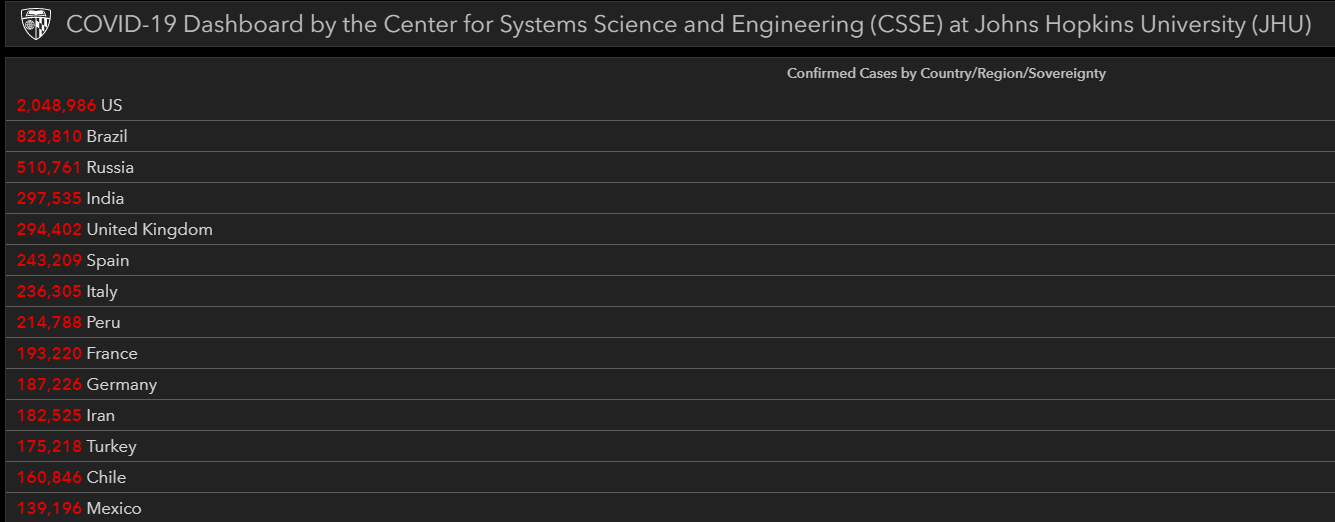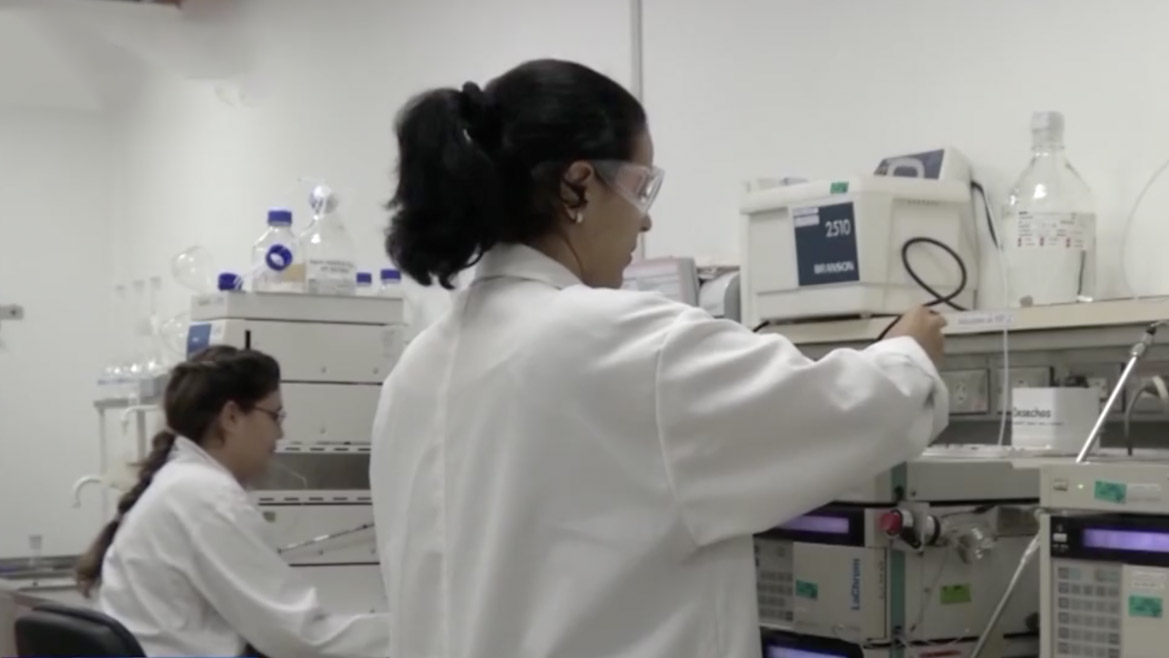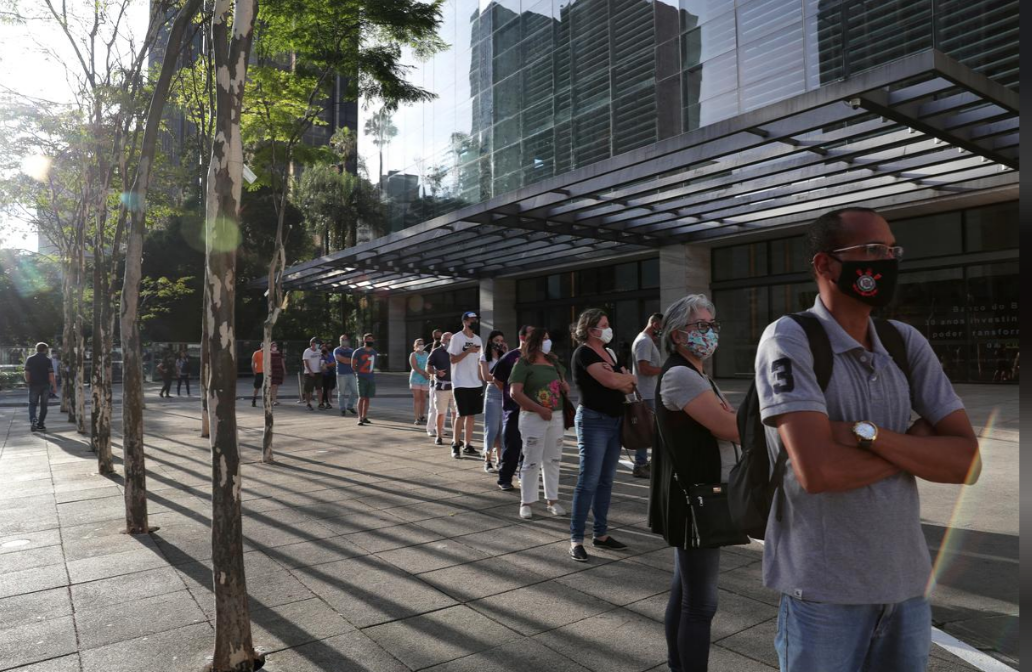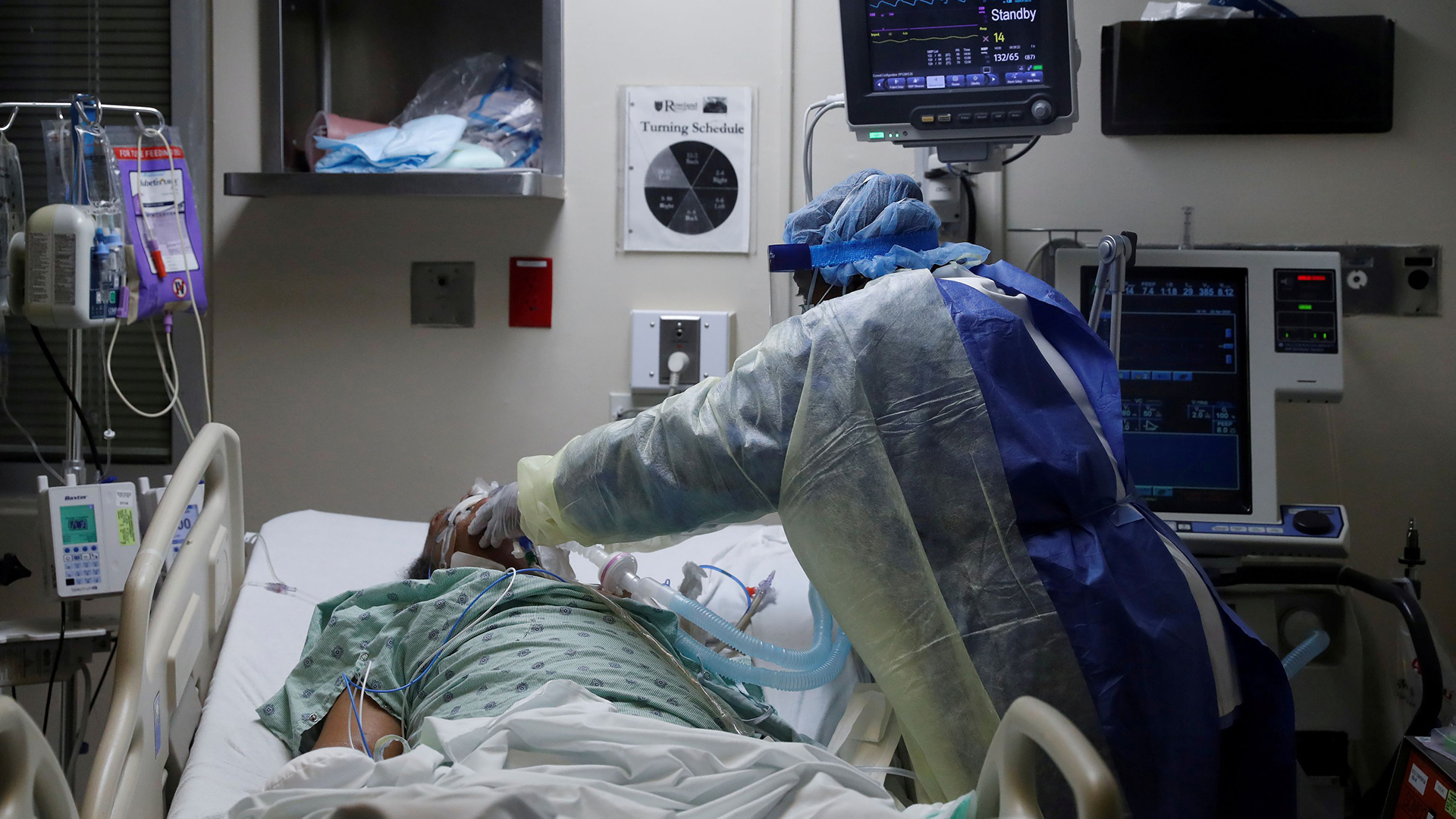This is the 75th article in the COVID-19 Global Roundup series. Here is the previous one.
The U.S., Brazil, Peru, Chile and Mexico – North and South American countries are bearing the brunt of the global COVID-19 pandemic at present.
These American countries rank as the worst hit areas in the world, according to the latest John Hopkins University COVID-19 dashboard. As World Health Organization (WHO) said on Friday, the disease was "highly active" in Central and South America, highlighting problems in Brazil and Mexico.

CGTN screenshot of the John Hopkins University COVID-19 dashboard as of 12:00 p.m. BJT, June 13, 2020.
CGTN screenshot of the John Hopkins University COVID-19 dashboard as of 12:00 p.m. BJT, June 13, 2020.
Upswing in America
Brazil has overtaken Britain as the country with the world's second-highest coronavirus death toll, which stands at 41,828, while its total confirmed cases is at 828,810, also the world's second highest.
The current situation in Brazil, now one of the global hotspots for the virus, is of increasing concern especially in heavily-populated cities. The country's health system is "still coping," although some intensive care units were at a critical stage and under heavy pressure with more than 90 percent bed occupancy rates, said Dr. Mike Ryan, chief of WHO's emergencies program. The Brazilian borders are now closed to all foreigners though June 21.
Meanwhile, another epicenter Mexico has nearly 130,000 confirmed cases and more than 16,488 deaths. Yet both numbers are considered substantially undercounted due to very limited testing. Mexico City is by far the hardest-hit part of the country. The country's capital hopes to process 100,000 tests daily by July, which would be a dramatic increase over current testing levels but still far short of some of the largest cities elsewhere in the world.
The capital city was never under a mandatory lockdown, but people were urged to stay at home. In recent weeks, street traffic has increased steadily as the federal government began pushing a return to a "new normal."
01:58

While COVID-19's progress has slowed in major U.S. cities such as New York and Los Angeles, confirmed cases have risen by double-digit percentages in other Central and South American countries. More than 1.5 million people have been infected in the area – 70,000 of them are already dead – with no signs of slowing down. Most of the countries, such as Argentina, Chile and Columbia, have implemented strict restrictions and lockdown requirements, but the pandemic is triggering social crisis beyond public health.
"We are very much in the upswing of this pandemic, particularly in the global South," the WHO's Dr. Ryan said. "Some countries are having trouble exiting of the so-called lockdowns as they are seeing an increase in cases."
Reopening process
On Friday, Mexico began setting dates for re-opening businesses in half the country next week, even as the nationwide daily confirmed cases total rose by a record 5,222 and 504 new deaths were reported. The federal government announced that starting Monday, half of Mexico's 32 states can start limited re-openings of hotels and restaurants and broader re-openings of markets. For example, factories and hotels could resume operations if they take safety measures.
This re-opening plan is based on a four-color scheme in which states with the worst conditions are colored red and those making progress are orange. States would eventually change to yellow and then green as conditions improve. The states to re-open are those that have falling rates of coronavirus hospitalizations, lower rates of infection and acceptable ratios of available hospital beds.
Mexican President Andrés Manuel López Obrador has been eager to reactivate the economy, which has shed nearly 1 million formal jobs and is forecast to contract 8.8 percent this year.

In Sao Paulo, Brazilian shoppers line up for hours and crowd into malls. /Reuters
In Sao Paulo, Brazilian shoppers line up for hours and crowd into malls. /Reuters
As the biggest economy in Latin America, Brazil is fighting the world's second worst number of infections. In Sao Paulo and Rio, Brazilians lined up for hours and crowded into malls that reopened on Thursday. In many public places, distancing rules are being followed and facial masks are required.
A poll by brokerage XP Investimentos released on Friday showed that 52 percent of Brazilians now favor easing quarantine restrictions, versus 44 percent against, even though 61 percent of those surveyed believe the worst is still to come.
Not an easy balance
The second wave of the pandemic is a possibility. As China has found several more cases locally this week, India, which has opened up in recent days, registered a record daily increase, and half a dozen U.S. states said their hospital beds were filling up fast.
It is possible the disease is spreading again as societies reopen and people begin meeting again, especially when there is inadequate testing and social distancing is insufficient.
02:37

However, pressure from lockdowns and unemployment has already ruined people's normal lives. Getting back to normal is urgent for both reducing the economic damage the crisis has wrought, and avoiding further social crises from happening.
"There is a careful balance between keeping people at home and the untoward effect of that on economic and society. That is not an easy balance. There are no correct answers," Ryan said.
Although some countries appeared to be over the worst of the virus, clusters of the disease were still occurring. WHO director-general Tedros Adhanom Gheybreyesus said that vigilance was required worldwide against the "very dangerous virus" even in regions where it appeared to be on the wane.
It's never easy to find a perfect balance in such an uncertain situation. The disease can damage the world in an unexpectedly fatal way, while the economic crisis can also bring in immeasurable fear and frustration.
Cover image via Reuters
(With input from AP and Reuters)